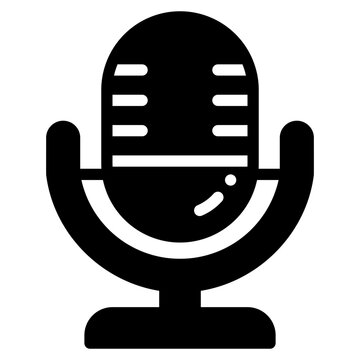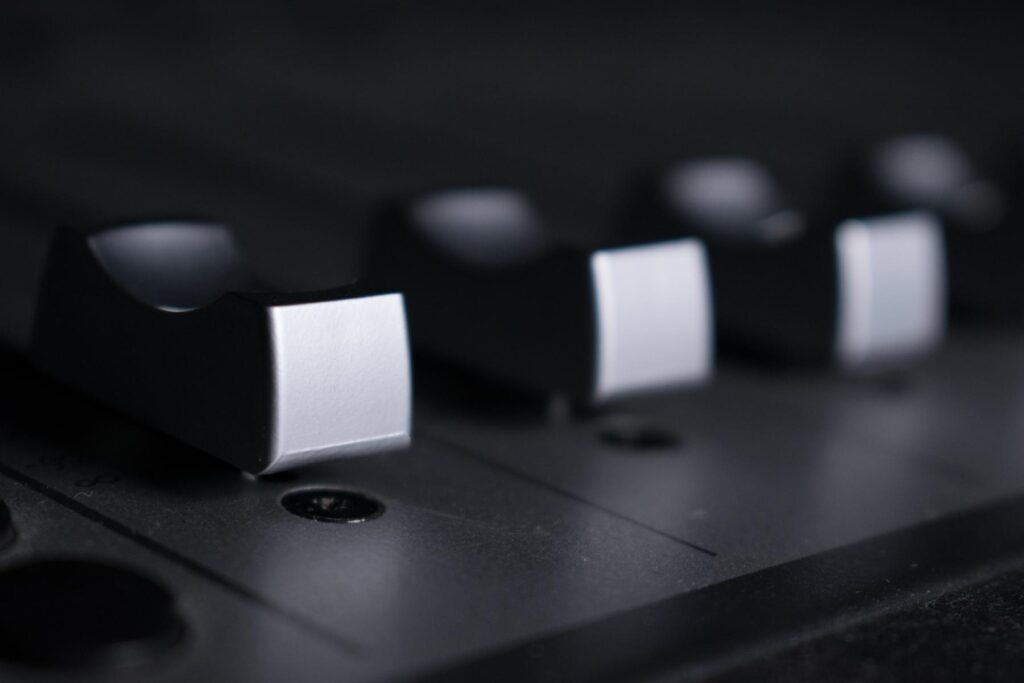If you’re a music producer, you know that a keyboard is an essential tool in your arsenal. Whether you’re just starting out or have been producing for years, understanding the basics of a music production keyboard is crucial to creating quality sounds and melodies. In this blog post, we’ll be going over the key fundamentals that every producer should know about their keyboard. So if you’re ready to take your music production skills to the next level, keep reading to learn more!
Table of Contents

Introduction to Music Production Keyboards: What You Need to Know
Music production keyboard is an essential tool for music producers who want to create high-quality tracks. It combines the functionality of a traditional piano with advanced features such as MIDI control, sampling, and sequencing. One important thing to keep in mind when shopping for a music production keyboard is that not all keyboards are created equal. Some are specifically designed for professional use, while others cater more towards beginners or hobbyists.
To make sure you get the most out of your music production keyboard, it’s important to understand its capabilities and limitations. This includes knowing which type of keyboard is right for you based on your skill level, preferred genre, and budget. Additionally, understanding key features such as weighted keys, polyphony count, and aftertouch can help you make an informed decision when making a purchase.
In this guide, we’ll cover everything from selecting the right type of music production keyboard to setting up your device properly with your DAW (digital audio workstation). Whether you’re just starting out or looking to upgrade your current setup, there’s something here for everyone. Let’s dive into the world of music production keyboards!

Types of Music Production Keyboards: Which One is Right for You?
When it comes to music production keyboards, there are several types to choose from. MIDI controllers are a popular choice for those who already have a computer with music production software installed. They typically do not have built-in sounds but allow for easy control over virtual instruments and effects within a digital audio workstation (DAW). Workstation keyboards, on the other hand, come with built-in sounds and often have more advanced features such as sequencers and samplers. They can be used as standalone instruments or integrated with a computer for even more control. Arranger keyboards are another option, designed specifically for creating accompaniment tracks for live performances or recordings. It’s important to consider your specific needs and budget when choosing the right type of music production keyboard for you.

Essential Features of a Music Production Keyboard: A Buyer’s Guide
When buying a music production keyboard, there are essential features that you should consider to ensure that you get the best value for your money. The number and quality of keys are crucial factors when choosing a keyboard since they significantly affect the playability and expressiveness of your performance. Most keyboards have either 49 or 61 keys with weighted or semi-weighted action, providing better control over dynamics.
Another important feature is pads and controllers, which allow you to trigger sounds, loops, samples, and manipulate effects in real-time. Look for keyboards with programmable pads such as MPC-style pads which can be used for drum programming.
The availability of knobs and sliders on a keyboard also allows you to adjust parameters quickly without diving into menus. This feature makes sound shaping more intuitive rather than time-consuming.
Other considerations include connectivity options like USB ports, audio outputs/inputs (AUX), software integration compatibility (DAW), polyphony (the number of notes that can be played at once), built-in sounds/synths/effects among others which may vary from one brand/model to another. Overall these features will help determine what kind of music production tasks a given keyboard fits best – whether it’s live performance-oriented or geared toward studio work.
Setting Up Your Music Production Keyboard: Tips and Tricks
How to connect your music production keyboard to your computer
To connect your music production keyboard to your computer, you will need a USB cable. Most modern keyboards come with a USB port, so simply plug one end of the cable into the keyboard and the other end into your computer’s USB port. Once connected, your computer should recognize the keyboard as a MIDI device.
To ensure that your keyboard is properly connected and recognized by your Digital Audio Workstation (DAW), make sure to check the audio settings in your DAW. You may need to select your keyboard as the input device in order to record or play back MIDI data.
It’s also important to keep your keyboard’s firmware and drivers up-to-date for optimal performance. Check the manufacturer’s website for any available updates or patches.
Tips for customizing the settings on your keyboard
When setting up your music production keyboard, it’s important to customize the settings to fit your specific needs. Mapping your keyboard’s controls to the functions you use most frequently can save you time and increase your efficiency. Additionally, assigning specific sounds or instruments to certain keys can streamline your workflow and make it easier to access the sounds you need quickly. Take some time to explore the customization options on your keyboard and experiment with different settings until you find what works best for you. Don’t be afraid to try new things and make adjustments as needed.
The importance of updating firmware and software for optimal performance
Updating firmware and software is crucial for achieving optimal performance from your music production keyboard. This ensures that the keyboard functions smoothly with your DAW and other equipment. Outdated firmware can cause compatibility issues, latency problems, and even crashes. It’s important to check the manufacturer’s website regularly for updates and install them as soon as possible.
Additionally, keeping software up-to-date allows access to new features and improvements in functionality that can enhance your music production experience. Make sure you have the latest version of any plugins or apps you use with your keyboard too, as they may also need updating for compatibility purposes.
By taking a few minutes to update firmware and software regularly, you’ll avoid frustrating technical difficulties during recording sessions or performances.
Troubleshooting common issues when setting up a music production keyboard
If you’re having trouble setting up your music production keyboard, don’t fret. One common issue is a connection problem between the keyboard and your computer or DAW software. Make sure all cables are properly connected and that your computer recognizes the device.
Another issue could be compatibility with your specific operating system or DAW program. Check the keyboard manufacturer’s website for any updates or downloads that may address compatibility issues.
Lastly, if you’re experiencing latency or delay when playing notes on your keyboard, adjust the buffer size in your DAW settings to reduce lag time. By keeping these troubleshooting tips in mind, you can set up and start using your music production keyboard seamlessly.
Understanding MIDI and DAW Integration with Your Keyboard
MIDI and DAW integration are essential components of using a music production keyboard. MIDI stands for Musical Instrument Digital Interface, which allows your keyboard to communicate with other devices such as computers or sound modules. DAW stands for Digital Audio Workstation, which is software used for recording, editing, and producing music.
To integrate your keyboard with your DAW, you will need to connect it via USB or MIDI cables. Once connected, you can use your keyboard to control virtual instruments and record MIDI data directly into your DAW. Some keyboards even come with built-in DAW control features, allowing you to control your software directly from the keyboard.
It’s important to note that not all keyboards are compatible with all DAWs, so be sure to check compatibility before purchasing. Additionally, it’s important to properly configure your MIDI settings within your DAW to ensure optimal performance and functionality.
By understanding MIDI and DAW integration with your music production keyboard, you can unlock a world of creative possibilities and streamline your workflow for a more efficient music-making process.

Getting Started with Music Production on Your Keyboard: Step-by-Step Guide
Getting Started with Music Production on Your Keyboard: Step-by-Step Guide
So, you’ve got your brand new music production keyboard and you’re ready to start creating some tracks. But where do you begin? Here’s a step-by-step guide:
-
*Connect your keyboard to your computer* – Most modern keyboards use USB cables for connectivity, but check the manual to be sure.
-
*Install any necessary software* – This may include drivers or specific software for your particular keyboard model.
-
*Choose a Digital Audio Workstation (DAW)* – A DAW is a software program that allows you to record, edit, and mix audio files. Some popular options are Ableton Live, Logic Pro X and FL Studio.
-
*Set up MIDI integration between your keyboard and DAW* – This will allow you to control virtual instruments within the DAW using the keys of your physical keyboard.
-
*Explore presets and sound libraries – Many keyboards come with built-in sounds ready for use straight out of the box, while others require downloading additional libraries from manufacturer websites*.
-
*Experiment with different chords progressions and melodies* – One way to explore creative possibilities is by experimenting with easy chord progressions like C Major Progression which consists of just three simple chords: C major 7th chord followed by F major 7th chord then G dominant 7th chord
Remember that practice makes perfect! With time and experimentation on even an entry-level music production keyboard can create amazing tracks in no time!

Advanced Techniques for Music Production on Your Keyboard
Customizing Your Sounds is a great way to take your music production keyboard skills to the next level. Many keyboards come with pre-loaded sounds, but you can also create and upload your own samples or presets. Spend some time experimenting with different sounds and effects until you find ones that best fit your style.
Another important technique is Layering multiple sounds to create unique textures and tones. By layering different instruments or sound samples, you can add depth and complexity to your compositions. Experimenting with different combinations of sounds can lead to unexpected musical ideas.
You should also consider exploring Arpeggiator functions, which allow you to quickly create intricate melodies by simply holding down a few keys on the keyboard. This feature adds a unique flair that can set your productions apart from others.
Finally, don’t be afraid to experiment with Different Playing Techniques, such as using pitch bend or modulation wheels in conjunction with other settings like filters or LFOs (low-frequency oscillators). These techniques will help add richness and variety into your performance – something that traditional composing methods may not offer.
Troubleshooting Common Issues with Music Production Keyboards
As with any electronic device, music production keyboards can sometimes encounter issues. One common problem is latency, which is the delay between pressing a key and hearing the sound. This can be caused by a slow computer or incorrect settings in your digital audio workstation (DAW). To fix this, try adjusting your buffer size or using a faster computer.
Another issue is connectivity problems. If your keyboard isn’t connecting to your computer or DAW, check that all cables are properly plugged in and that your drivers are up to date. You may also need to adjust your MIDI settings.
If you’re experiencing strange sounds or glitches, it could be due to interference from other electronic devices or software conflicts. Try closing any unnecessary programs and moving your keyboard away from other electronics.
Lastly, if you’re having trouble with specific keys or functions on your keyboard, check the manual for troubleshooting tips or contact customer support for assistance. Remember to always keep your software and drivers up to date for optimal performance.
In conclusion, a music production keyboard is an essential tool for any musician or producer looking to create high-quality music. By understanding the basics of music production keyboards, you can choose the right one for your needs, set it up properly, and start producing music like a pro. Remember to look for essential features such as velocity-sensitive keys, aftertouch, and programmable pads to make your workflow more efficient. With this guide, you’ll be able to create amazing music on your keyboard in no time.
If you want to learn more about keyboards and music production, be sure to check out our other content. We have plenty of articles and resources that can help you take your music production skills to the next level. Thanks for reading!
Questions and Answers
Q: Who should consider buying a music production keyboard?
A: Anyone interested in producing music, from beginners to professionals.
Q: What features should I look for in a music production keyboard?
A: Look for velocity-sensitive keys, MIDI compatibility, and assignable knobs and faders.
Q: How does a music production keyboard differ from a regular keyboard?
A: A music production keyboard has features specifically designed for music production, like MIDI compatibility.
Q: What if I already have a regular keyboard, do I need a music production keyboard?
A: While a regular keyboard can work, a music production keyboard has features that make producing music easier and more efficient.
Q: How do I connect my music production keyboard to my computer?
A: Use a USB cable to connect your keyboard to your computer, or connect via MIDI using a MIDI interface.
Q: What is the price range for a music production keyboard?
A: Prices can range from around $100 for entry-level models to over $1,000 for professional-grade keyboards.


